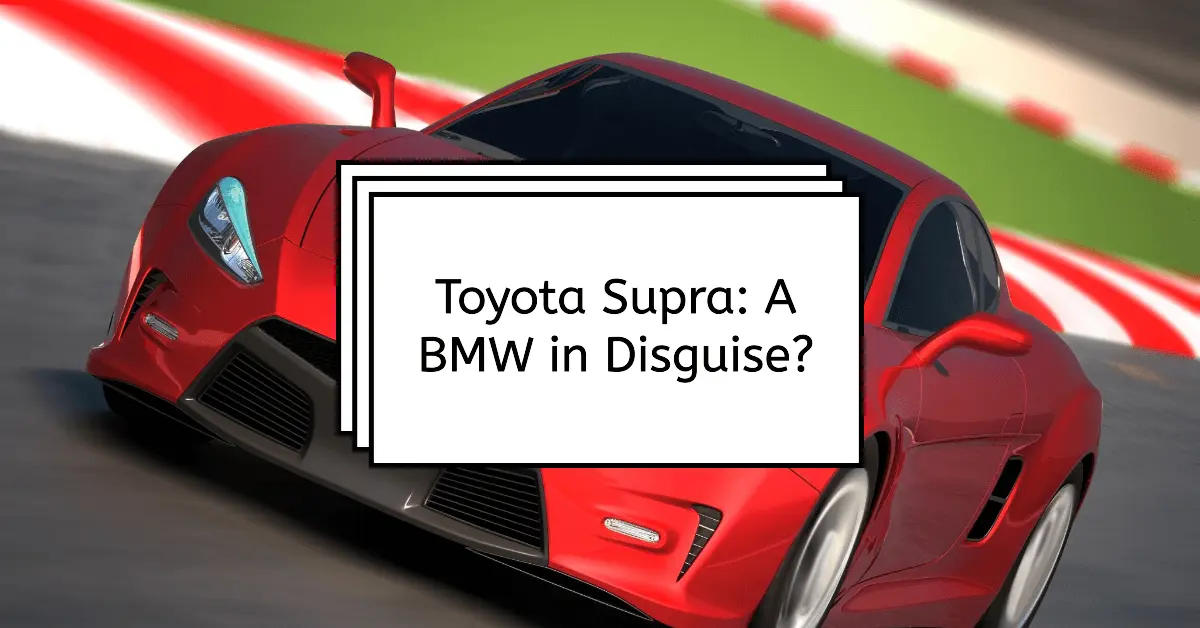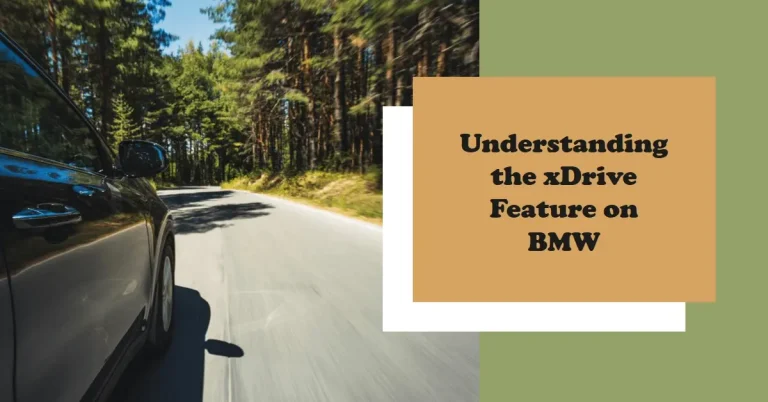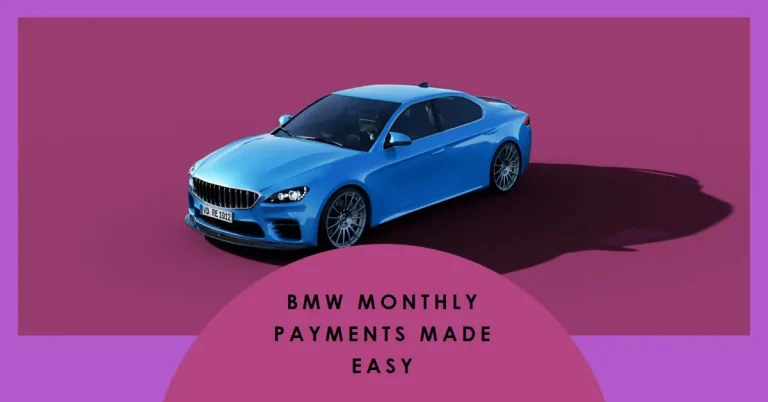Is the Toyota Supra a BMW in Disguise?
The launch of the all-new, fifth-generation Toyota Supra for the 2020 model year marked the triumphant return of a sports car legend after a nearly 20-year absence from the market. But not all fans and enthusiasts welcomed it back with open arms when Toyota finally unveiled this successor to the beloved A80 Supra produced up until 2002.
Immediately upon seeing the concept and production versions from Toyota in 2018 and 2019, purists and Supra devotees started questioning if the new GR Supra was really a Toyota at heart or merely a BMW Z4 hiding under more aggressive Toyota sheetmetal.
So does this latest generation of the venerable Toyota Supra live up to its heritage and bloodline by being a “true Toyota,” or is it more accurately characterized as a BMW thanks to the extensive sharing of parts and development between the two brands? Let’s examine the details around the new Supra’s creation and how Toyota aimed to deliver the speed and power hungry customers demanded while still retaining the model’s identity.
Toyota Had Hinted at a New Supra for Over a Decade
The seeds for an all-new Toyota Supra were actually first planted over 15 years ago when the automaker unveiled the aggressive FT-HS sports car concept at the 2007 Detroit Auto Show. While officially labeled as a concept that explored Toyota’s vision for a future hybrid sports car, the FT-HS was soon linked to rumours of a possible rebirth of the Supra nameplate.
But a production version of that stunning concept failed to materialize within the traditional three years and the possibility of a new Toyota sports car fronted by a powerful inline six-cylinder engine seemed to fade as the economy headed into recession.
The 2014 FT-1 Revived Dreams of a Fifth-Gen Supra
Then out of the blue at the January 2014 Detroit Auto Show, Toyota stunned journalists and hardcore fans by debuting the even more spectacular FT-1 sports car concept.
Clearly more Supra inspired visually than the earlier FT-HS, rumours swirled that the FT-1 could finally lead to the rebirth of the legendary Supra bloodline for the 2020 model year. Expectations started running wild about specs like 400 horsepower from a turbo inline-six while design elements like the curves over the rear wheel arches linked it back to the fourth-generation A80 Supra.
Yet by 2019 there was still no official fifth-gen Supra merchandise available from Toyota. Had the FT-1 just been a fanciful tease to gauge public interest after memories of Fast and Furious movies started to fade?
Toyota Partnered With BMW to Finally Deliver the New Supra
Behind closed doors Toyota engineers knew a proper successor to the legendary A80 Supra would need a powerful inline six-cylinder engine as one of its defining features. After all what good was bringing back the famous Supra badge if it didn’t have the engine note and power delivery die-hard fans demanded from the late 1990s icons?
The challenge Toyota faced in developing such an engine from scratch was that it would likely delay release of a new Supra many more years…not to mention add tremendous cost for low volumes.
So Toyota got creative and entered talks with BMW about the German luxury brand supplying engines, transmission, and other components for the reborn Supra. After all BMW produces a wide range of acclaimed inline six engines already and was preparing its own two-seater sports car in the form of the new Z4.
By joining forces on development of the two sports cars, Toyota could tap into proven BMW powertrains while BMW benefitted from splitting costs that it likely couldn’t have justified alone for the low volume Z4 model.
“Toyota realized there was too much risk to do it totally in-house when you consider the resources needed and sales volumes involved. So they pulled BMW into the project,” explained one industry insider familiar with the development process.
So when the new “A90” generation Toyota GR Supra finally debuted in January 2019 after nearly 20 years since the last A80 models rolled off the production line, they clearly shared a multitude of internal parts with the new 2019 BMW Z4 behind the scenes.
But rather than seeing this as “cheating” using someone else’s engine and transmission hardware, Toyota embraced the partnership that provided the means to deliver a new Supra without the years of delays and inflated price tag of developing totally unique powertrains.
Many Parts are Shared Between the Supra and BMW Z4
Given the extensive BMW and Toyota parts sharing program that finally enabled the fifth-generation GR Supra to come to fruition, it should come as no surprise that the Supra and BMW Z4 share countless common components under the sheet metal:
Chassis and Suspension
The two sports cars ride on the same chassis platform and suspension design for the fundamentals like wheelbase, track width, base suspension mounting points and geometry.
Engines and Transmission
As previewed by all those earlier concept cars dating back over a decade, the new Toyota Supra features turbocharged straight six-cylinder engines supplied by BMW. Displacements include a 3.0-liter unit along with a base 2.0-liter four-cylinder. An eight-speed automatic transmission from BMW also transfers power in all models rather than any manual or Toyota transmission option.
That said Toyota engineers did specifically tune the engines and transmission programming to produce different horsepower and torque than the Z4 along with unique throttle responses.
Interiors
Some interior plastic pieces and switchgear carry BMW logos indicating their supply from the donor Z4 parts bin. The fundamental dashboard design features a driver-focused cockpit with controls angled towards the helm while a center touchscreen is further evidence of BMW interior influence.
Manufacturing
Rather than being built in a Toyota plant in Japan, all units of the fifth-generation GR Supra originate from the the same Magna Steyr contract assembly facility in Graz, Austria that also handles production of the related Z4 roadster. Workers at the versatile Magna site simply switch between Z4 and Supra production depending on schedules and parts supplies that month. Paint shops, final assembly stations and test procedures are shared processes benefiting both models.
Exterior and Interior Design Totally Differentiate the Toyota and BMW Sports Cars
Given the laundry list of shared mechanical, chassis and interior components outlined above, you would be forgiven for declaring the new Toyota GR Supra is basically “a BMW Z4 in drag” as many internet commentators have.
But that assessment completely ignores how Toyota went to great lengths to visually and functionally differentiate the Supra from its Bavarian collaborator in the areas that owners interact with the most – its exterior styling and cockpit layout.
Let’s compare the two sports car interpretations side by side:
Toyota GR Supra Design Elements
- Signature sloping coupe roofline unlike the Z4 convertible
- Unique double bubble roof for extra headroom
- F1-inspired central carbon fiber stripe on hood
- Formula 1-style front air curtain intakes
- Ducting to feed six air intake ports
- Pronounced hip line over rear wheel arches
- Blacked-out panel between tail lights
- Racing-style rear diffuser flanked by four exhausts
- Driver-focused interior with jet fighter cues
- Red accents and trims options
BMW Z4 Exterior Design
- Soft top convertible only, no coupe option
- More luxury styling cuesvs race track aggression
- Iconic BMW twin kidney grille
- Curvaceous fenders and side profile
- Chrome pinched tail lights inset horizontally
- Twin center exhausts with decorative surround
- Luxurious cabin execution aiming at gran tourer market
Clearly the Supra and Z4 adopt radically different personalities and driving experiences shaped by Toyota and BMW’s distinctive design languages. Apart from both being two-seat sports cars, they hardly look related with different interpretations of what that concept should deliver for their target customer demographics.
Toyota Tuned the Supra for More Hardcore Performance
Beyond making the shells of the Supra and Z4 look so visually distinct, Toyota also took steps to further distance how they perform dynamically through detailed tuning changes underneath:
- Lower center of gravity
- 50/50 front/rear weight distribution for handling neutrality
- Aluminum used for hood, doors and fenders to cut weight
- Additional chassis bracing compared to BMW Z4
- Sportier steering ratios for quicker turn-in
- Revised suspension bushings and damping
- Unique engine and transmission programming
The result is the GR Supra feels more nimble and eager to change directions than the Z4 focused on cruising comfort over lap times during development by BMW M. Toyota targeted the Porsche 718 Cayman as the dynamic benchmark for their setup decisions.
Sales Figures Show Car Buyers Haven’t Penalized the Supra for BMW Parts Sharing
The best test of whether Toyota made the right decision to collaborate so deeply with BMW in delivering the quintessential inline six powered Supra is how the market reacts.
Do buyers care about the BMW sourced engines, shared interior pieces and identical Austria assembly plant when Toyota has wrapped the package in such a radically different and emotional exterior skin?
US sales figures for the first year show consumers smiled widely on the new Supra with 3,897 delivered while the related BMW Z4 saw only 2,253 sales:
Toyota GR Supra Sales in 2019-2020: 3,897 units
BMW Z4 Sales 2019-2020: 2,253 units
The 71% sales lead the Supra enjoys over the donor BMW is strong evidence car enthusiasts care more about standout styling and the legendary Supra nameplate instead of mechanical DNA. Toyota made smart business and development decisions that should be applauded given market response.
Purists Dislike the BMW Sourced Parts and Lack of a Manual
That said a vocal minority of hardcore Toyota and Supra devotees continue to despise the new “A90” gen model for its BMW shared components under the sheetmetal even two years after launch. Their complaints tend to focus on a few key areas they see as making it less of an authentic Toyota sports car:
Lack of Toyota Engine
Since the beloved 2JZ inline-six powered the heritage fourgen A80 Supras still used in amateur drag racing today, some can’t stomach a BMW motor under the hood now regardless of Toyota’s calibration changes. The sound, vibration and power delivery won’t match their memories.
No Manual Transmission Option
BMW has steadily moved away from manual gearboxes in its lineup so as another byproduct of its partnership, Toyota also had to adopt the ZF eight-speed automatic integrated into the Supra platform. No three-pedal manual means purists attack it as less driver focused despite quicker shifts.
Interior BMW Switchgear
The sharing of various interior plastic pieces and switchgear means some functions are controlled using components labeled with BMW logos rather than Toyota. While minor and out of sight for most owners, it offends Supra traditionalists expecting a 100% Toyota cabin.
“The very people who should love and embrace this reborn icon seem to now hate it with the fury of a thousand suns,” reflected one Toyota insider familiar with traditional owners’ reactions. “But we know the economics and emotional target of the broader market strongly favor our direction.”
For such defenders of the faith, no reasoning about business cases, development costs or common BMW practice will relieve their distaste at presumed violation of the Toyota sports car bloodline now flowing with German DNA inside it. The rest of us call it proudly displaying a legend’s iconic badge with reverence on top of advanced mechanical bones.
Shared Development Made Sound Business Sense
While one can appreciate hardcore Supra fans’ arguments that the A90 gen model has strayed too far from Toyota-designed predecessors, the reality is developing a wholly unique new sports car was likely an unrealistic financial and engineering challenge back in 2012.
Inflation adjusted the 2020 GR Supra would have cost far more than its roughly $50,000 launch price if Toyota tried developing a unique platform and drivetrain without BMW’s involvement. Sales volumes could never justify the independent research and manufacturing infrastructure.
Consider that BMW sells over 300,000 vehicles annually in North America alone as an indication of volumes needed to recoup big development costs. Even with BMW’s engine and component sharing, Toyota predicts selling about 1,500-2,000 Supras in Canada and the US each year.
The business case to release a beloved halo sports car name like the GR Supra therefore becomes viable because of tapping into BMW’s economies of scale, rather than handicapped by it. Both companies win under the partnership.
The Verdict
The new fifth-generation “A90” Toyota GR Supra attracts plenty of controversy amongst diehard enthusiasts of previous models for adopting so many BMW-sourced components mechanically. From engines to suspensions to interior switches a BMW Z4 lurks below the surface.
But step back to examine Toyota’s challenge of reviving an iconic sports car dormant nearly 20 years and the solution becomes clear. Collaboration with BMW provided the only sensible pathway to deliver a Supra true to what made its ancestors great – thrilling inline six power, head turning looks, and everyday livability.
Toyota realized the prohibitive challenges of recreating all that magic wholly in-house and alone. Instead they focused resource on injecting Toyota’s design DNA and calibrating the precision machine from their partner into a vehicle reviving the spirit of Supras longtime devotees worship.
In the process Toyota has introduced the joys of inline-six powered, grand touring inspired sports cars to a new generation as well. The market response and owner satisfaction rankings prove the A90 deserves to proudly wear Toyota’s GR Supra badge – being transformed by Toyota talent rather than diminished by BMW association as some critics charge.
The numbers don’t lie either with resounding sales success showing public acceptance of Toyota’s tricky path navigating between reverence for Supra heritage and financial realities. We should simply tip our hats to Toyota for pulling off the improbable and igniting more inline-six enthusiasm under a legendary badge for the 2020s.







